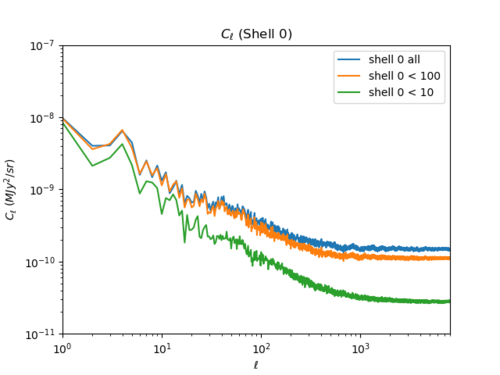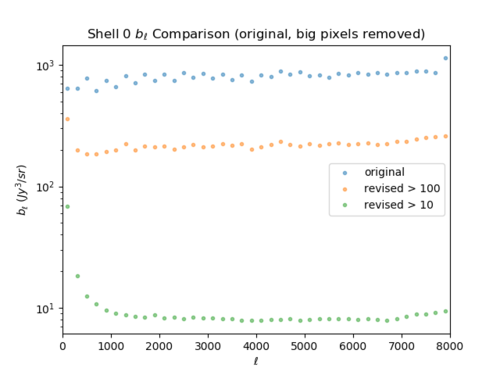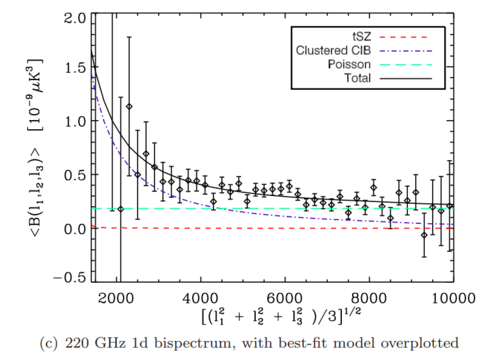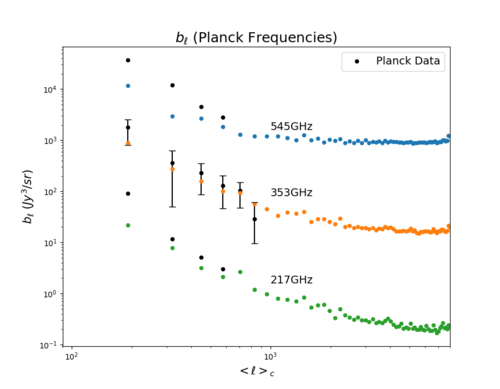Aug 12th, 2019 - CIB Bispectrum: A Few Pixels in the 0th Shell Going Wild?
Jump to navigation
Jump to search
Previously (both last year and a month or two ago), we discussed how statistics of the closest comoving distances in the Peak Patch CIB map may be inaccurate due to several extremely close galaxies with very high flux values. I took at another look at this and it seems that this may still be true with the most recent CIB map, although the best way to find out is to compare the Poisson part of the total (meaning including all CIB shells) bispectrum with the Crawford plot (https://arxiv.org/pdf/1303.3535.pdf) as shown below (Section 2).
The first 100 Mpcs, which I refer to the '0th shell', has a mean of roughly [math]\displaystyle{ 2 \times 10^{-4} (MJy/sr) }[/math], which is less than 1000 times smaller than the mean of the total CIB map (about 0.33 MJy/sr) and only has about 40,000 pixels that are not zero (out of 201,326,592 pixels in an NSIDE 4096 map). For comparison, the shell with the next least number of pixels that have non-zero values have 480,000 pixels that are not zero.
But some of the pixels in the 0th shell have abnormally large flux values. There are 2 pixels larger than 100 MJy/sr (500,000 times larger than the mean) and about 450 pixels larger than 10 MJy/sr (50,000 times larger than the mean). In comparison, none of the other shells have any pixels with values larger than 5 MJy/sr.
So, I plotted the power spectra and the bispectra of the 0th shell after setting the abnormally large pixels to the mean of the shell in comparison to the original 0th shell. In both plots, the orange curves and green curves represent the 0th shell with the pixels larger than 100 and 10 MJy/sr respectively being set to the mean.
Section 1: Power Spectra and Reduced Bispectra of the 1st 100 Mpcs
The power spectrum drops by a factor of 1~2 when the 2 largest pixels are removed and by a factor of around 10 when about 450 pixels are removed. The change is much more drastic for the bispectra, with the 2 pixels accounting for more than 80% of the bispectrum and the 450 pixels accounting for more than 99%.
Because of this, I believe that the lensing effect I calculated with the halo-only kappa is probably much smaller than it actually is, we will have to check eventually to be sure.
Section 2: Sims Bispectra vs. Crawford Plot
I will try to do the conversion between the two plots below to see whether our Poisson part (with the 0th shell included) is accurate.



